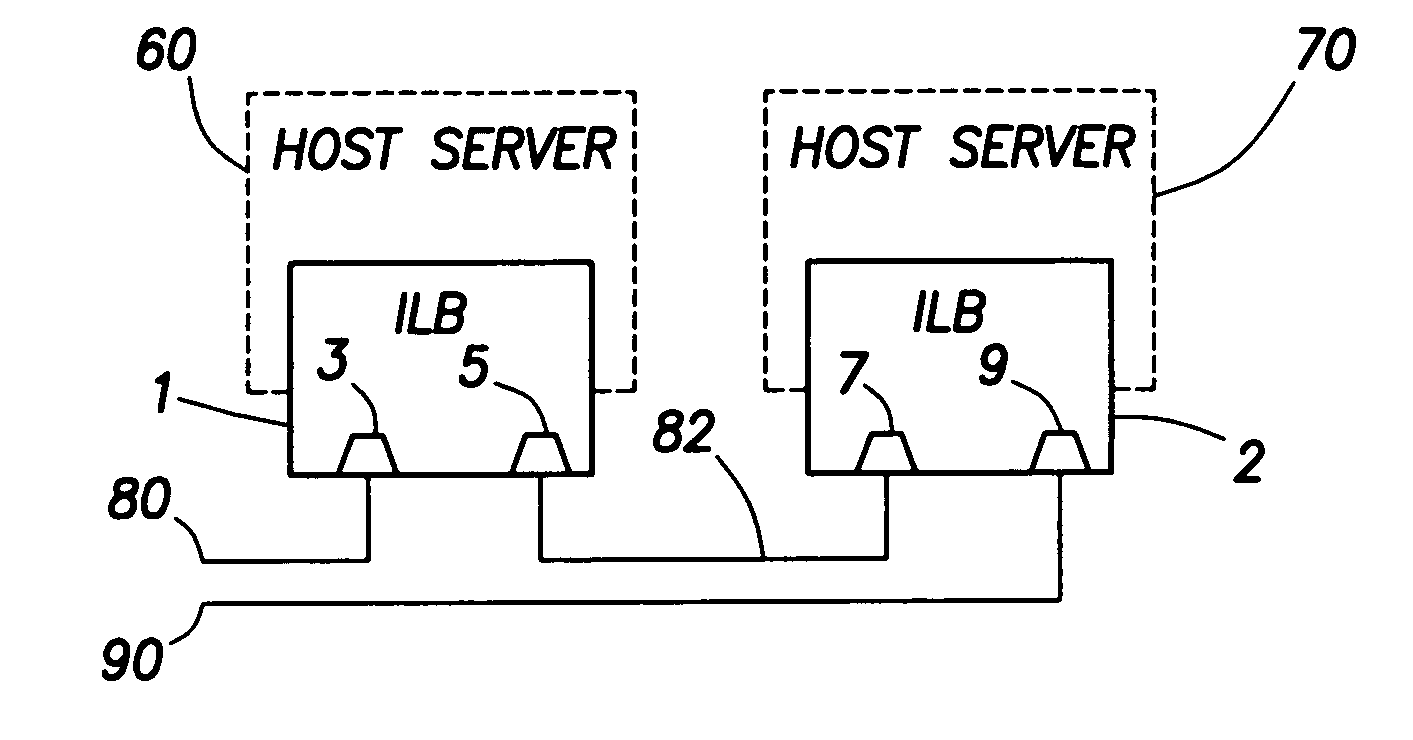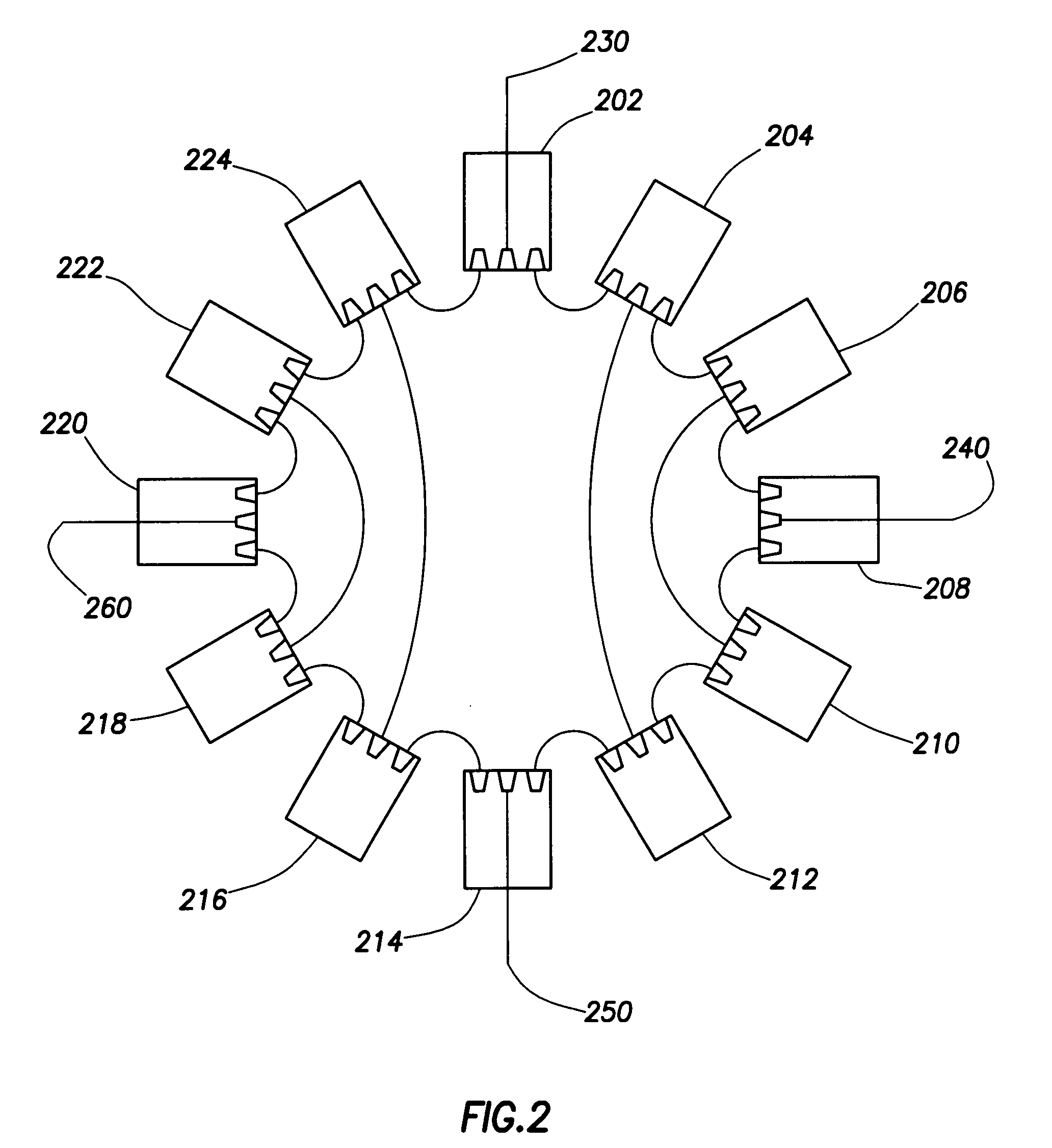Method for integrated load balancing among peer servers
a peer server and load balancing technology, applied in the field of computer networks and servers, can solve the problems of single point of failure high cost of using the same type of load balancing box for newer generation of servers, and all servers connected to it can lose connectivity to the external network or network
- Summary
- Abstract
- Description
- Claims
- Application Information
AI Technical Summary
Benefits of technology
Problems solved by technology
Method used
Image
Examples
Embodiment Construction
[0017]The present invention relates to a method for connecting multiple computer servers to each other and to an external network or networks in an efficient, reliable, and cost-effective manner. The invention enables the servers to share information with their peers on data traffic volume and capacity and thus to efficiently balance loads among themselves. Load balancing involves either distributing traffic to the servers so that all servers have approximately equal ratios of traffic volume to traffic handling capacity, or when traffic volume is low, reducing or turning off power to some servers while others handle the traffic. Multiple data paths are provided among the servers and to any external networks. This redundancy of data paths allows connectivity to be maintained if a network connection is lost or if a server fails or is disconnected. Balancing of loads, redundancy of connections, and assurance of connectivity to other servers during failure or disconnection of one or mor...
PUM
 Login to View More
Login to View More Abstract
Description
Claims
Application Information
 Login to View More
Login to View More - R&D
- Intellectual Property
- Life Sciences
- Materials
- Tech Scout
- Unparalleled Data Quality
- Higher Quality Content
- 60% Fewer Hallucinations
Browse by: Latest US Patents, China's latest patents, Technical Efficacy Thesaurus, Application Domain, Technology Topic, Popular Technical Reports.
© 2025 PatSnap. All rights reserved.Legal|Privacy policy|Modern Slavery Act Transparency Statement|Sitemap|About US| Contact US: help@patsnap.com



